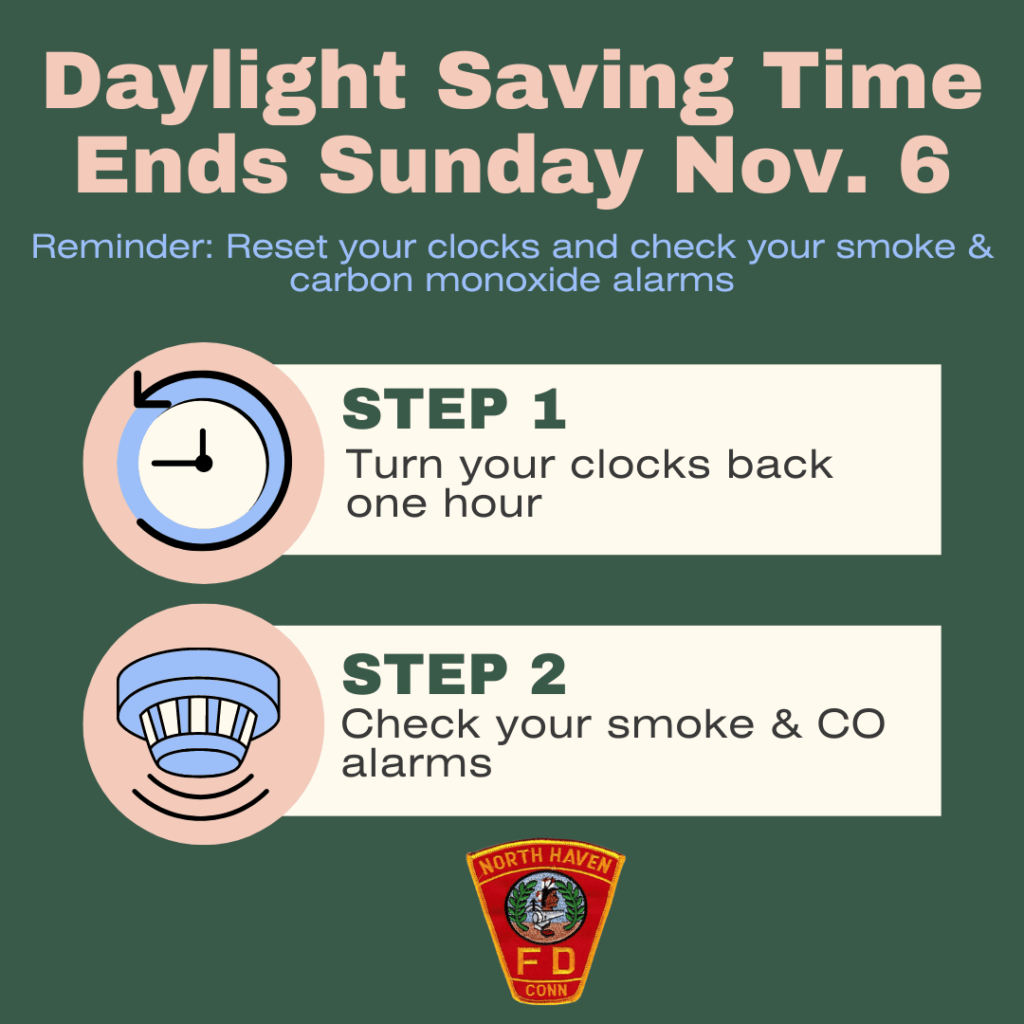Chief Paul Januszewski and the North Haven Fire Department would like to remind residents to check their smoke and carbon monoxide alarms when setting their clocks back for daylight saving time this weekend.
Daylight saving time ends on Sunday, Nov. 6, at 2 a.m., and clocks will move back one hour at that time.
Residents are encouraged to check their smoke and carbon monoxide alarms to ensure that they are working properly and to change the devices’ batteries, if needed.
Smoke alarms that are properly installed and maintained are vital in reducing deaths and injuries due to fire by giving you time to escape.
According to the National Fire Protection Association (NFPA), from 2014-2018 three out of five home fire deaths resulted from fires in homes with no smoke alarms (41%) or no working smoke alarms (16%). In fires in which the smoke alarms were present but did not operate, two of every five (41%) of the smoke alarms had missing or disconnected batteries.
Residents are encouraged to review the following safety tips, courtesy the NFPA, to keep their homes safe and prevent fires or carbon monoxide poisoning:
- Test all smoke alarms at least once a month, pressing the test button to ensure the alarm functions properly.
- Smoke alarms with non-replaceable 10-year batteries are designed to remain effective for up to 10 years. If the alarm chirps, warning that the battery is low, replace the entire smoke alarm right away.
- Alarms with any other type of battery need a new battery at least once a year. When you change your clocks, also replace regular batteries in smoke and carbon monoxide alarms.
- Smoke alarms have a shelf life of 10 years. Be sure to replace them after 10 years of use.
- CO alarms should be replaced according to the manufacturer’s instructions.
- Install smoke alarms inside each bedroom, outside each sleeping area and on every level of the home, including the basement. On levels without bedrooms, install alarms in the living room (or den or family room) or near the stairway to the upper level, or in both locations.
- CO alarms should be installed in a central location outside each bedroom or sleeping area, on every story of the home and in other locations required by standards, codes or laws.
- Make sure alarms interconnect so when one alarm sounds, they all do.
- When an alarm sounds, immediately exit the house or building and ensure each person inside the home is accounted for. Then call for help and await instructions from emergency personnel.
- Working with each member of the household, create and practice a home escape plan.
- More tips about installing and maintaining smoke alarms can be found here, and carbon monoxide alarms here.
Today’s smoke alarms are more technologically advanced to respond to a multitude of fire conditions, yet mitigate false alarms. Residents are reminded that smoke and carbon monoxide alarms are not interchangeable and should never be disconnected.
For questions on smoke or carbon monoxide alarms, contact the North Haven Fire Department at 203-239-5321.
###

